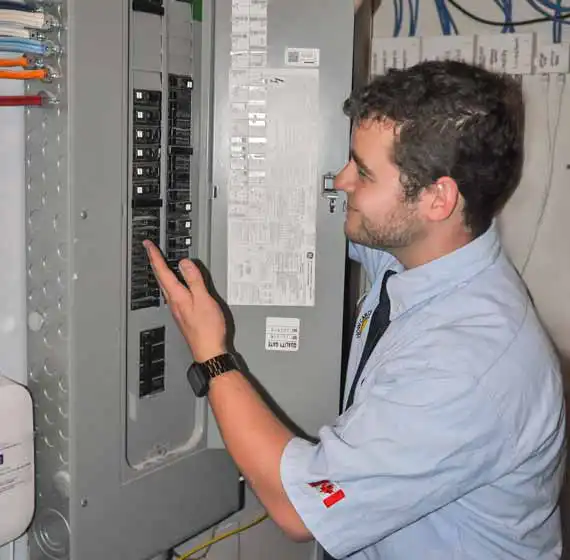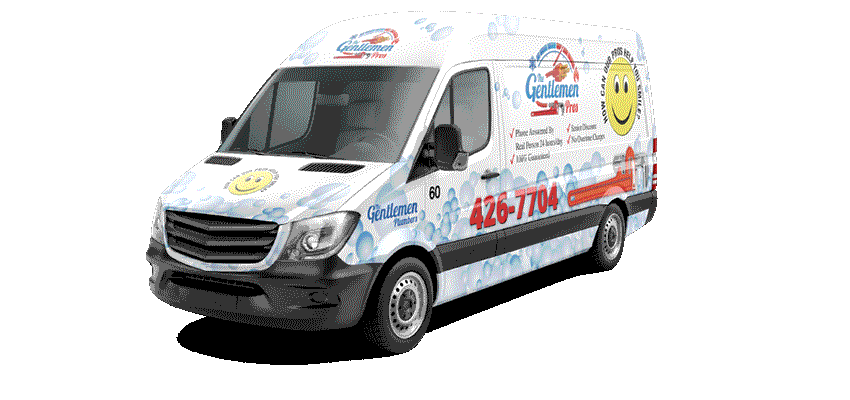We're In Your Neighborhood!

Same Day Service
Since 2001
Call The Gentleman Pros Now!
(403) 879-1759
We're In Your Neighborhood!


Same Day Service
Since 2001
Call The Gentleman Pros Now!
(403) 879-1759

Experienced Calgary electricians who can quickly and professionally install and upgrade your electrical panel. Are your breakers constantly tripping? Or do you still have an outdated fuse box (these went the way of the dinosaurs in the 1960s) and your fuses keep blowing?
If you answer yes, it’s probably time for a new electrical panel. And if you still have a fuse box, it’s definitely time for a new one.
“Installation of a condo unit surge protector by Marc, was completed knowledgeably and efficiently. Gentleman Pros always guarantee top notch service and skill level, regardless of the task required. Julian has completed extensive upgrades as well, including a dedicated circuit, installation of hallway pendant lights and two ceiling fans, and, a remote Kidde smoke detector unit. Miscellaneous tasks were also addressed, such as LED ceiling replacements and furnace room wiring cleanup. He is always invested in his work, striving to make the residence as comfortable and safe as possible. Gentlemen Pros looks at the big picture with regard to home maintenance, and their work is meticulous.”
Laurie

Not only does it connect your house to the electricity grid and breaks down the power supply for your branch circuits, but it’s also a critical safety measure. Circuit breakers inside the panel trip when your electricity is behaving dangerously. For example, when electricity is travelling outside the designed circuit or when you are trying to use more electricity than the circuit is designed for.
Because it’s such an important safety feature, if you have any concerns about your panel, please call an electrician immediately. Call our helpful customer service agents, they are available 24/7 to answer your calls. Or reach out through our online form.
An electrical panel is your home’s electrical command centre. It connects your house’s internal electrical wires to the grid. It’s where the electricity enters your home and then splits along branch circuits to provide electricity to the different areas of your house.
People call the electrical panel by a lot of different names — fuse box (even when it doesn’t contain any fuses), electric panel, distribution panel, breaker box, and breaker panel are just some of the terms you’ll hear used. Electricians often use the technical term “load centre”.
To safely distribute electricity throughout your home, the electrical panel has several components.
The electricity from the grid enters the home through the electrical meter and then into the main breaker. It’s usually rated for 100-amps or 200-amps.
The main breaker is the switch you flip if you want to turn off the power to your entire house. It’s also a safety feature and will “trip” and shut off power to your entire house if it detects a problem. For example, if your home uses too much power, if a short circuit occurs that is big enough to trip the main breaker. Or, if there is a short in the panel. It’s a large switch usually located at the top of the panel. Though sometimes the location is at the bottom of the panel or along the side.
Remember, the electricity from the main breaker runs to two bus bars. They are metal bars that run parallel to each other down the middle of the panel and are connected to the main breaker by two thick wires.
Each bus bar carries 120 V of electricity from the main circuit breaker to each of the individual circuit breakers. All the circuit breakers become attached to the bus bars. And, each breaker pulls power from the bars to supply its circuit. There are two types of circuit breakers. A single-pole breaker connects to one bar. And, a double-pole breaker connects to both bars.
From the bus bars, the electricity becomes divided to supply the different electric circuits in your house. Each circuit has its own breaker.
You can turn the power off to one circuit by flipping the circuit breaker’s switch. They are also safety features and will automatically turn the power off to its circuit if it detects a short or the circuit becomes overloaded.
A standard residential circuit becomes rated 15-amps or 20-amps of electricity and designed to carry 120 volts. A circuit breaker typically can only handle 80 percent of the circuit’s overall amperage, meaning a 15-amp circuit breaker can handle approximately 12-amps and a 20-amp breaker can handle around 16-amps.
A double-pole circuit breaker is typically rated between 20-amps and 60-amps and carries 250 volts. It supplies electricity to appliances that need more electricity than a standard circuit. Items like your dryer, air conditioning unit, or electric vehicle charger.
From the circuit breaker, the electricity becomes distributed to the different circuits on “hot” wires, which are usually black. Secondary “hot” wires are often red.
Electricity runs on a loop (circuit) and always returns to its source. Meaning the electricity that comes from the grid into your house through the main panel must come back to the main panel and then back out to the grid.
To complete the loop, the electricity flows back to the main panel on white neutral wires. Remember a white neutral wire also carries electricity, so you need to be as careful with it as you are with the black and red “hot” wires.
The neutral wire connects to the neutral bus bar which returns the electricity to the grid.
And, the neutral bar is usually located on the right side of the electrical panel.
Grounding wires are part of your electrical safety system and are the green-coated or bare copper wires running parallel to the other electrical wires in your home.
They connect conductive elements of the circuit that aren’t supposed to carry electricity (for example, junction boxes). They create a safe path for electricity that has “escaped” the designed circuit to return to its source, either the grid or ground.
They’re a safety feature designed to be the safe path back to the source for any and all electricity in the system that is travelling outside the designed circuit. Electricity outside of a circuit is very dangerous because electricity will find and use all routes back to its source. If it can’t use its designed circuit, it will use anything conductive and that includes you. So grounding wires prevent injury and damage.
Grounding wires carry any “escaped” electricity back to the electricity’s source, either the grid or the earth, through the electrical panel. This electricity will run along these lines to the bonding bus bar in the electrical panel. Then, either through the neutral bus bar back to the grid or through the main grounding conductor into the earth through the grounding rod or plate. This stops this electricity from giving shocks and starting a fire. They’re also called bonding or bond wires.
The grounding wires enter the electrical panel and connect to the grounding bus bar. The grounding bus bar is usually located on the left side of the panel, though it can also be found on the right side. and it’s connected along the bottom of the panel to the neutral bar.
The grounding bus bar is also connected by a copper wire to either a copper grounding rod that is driven deep into the earth, a buried copper grounding plate, or a metal rod from the house that is connected to an underground water supply. If the electricity’s source is the grid, the electricity will travel along the wire connecting the grounding bus bar and neutral bar back to the grid. Along the way, the circuit breaker will trip, shutting down the power to that circuit.
If the electricity is from an indirect lightning strike, the electricity will travel from the grounding bus bar, through the copper wire connecting it to the grounding rod or plate and into the ground.



